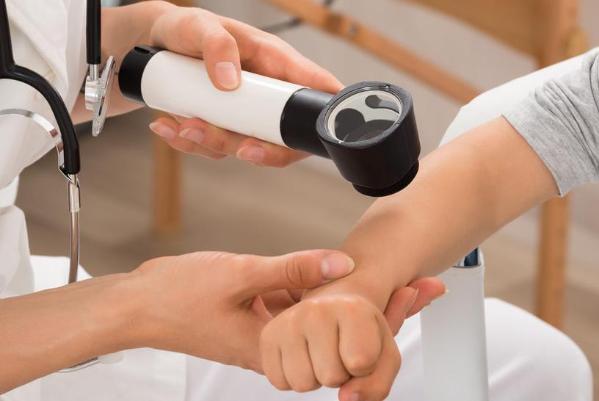Medicina Interna, Dermatología y Psiquiatría
Departamento


Hospital Son Llàtzer
Palma, EspañaPublicaciones en colaboración con investigadores/as de Hospital Son Llàtzer (70)
2024
-
Curative Strategy for High-Risk Smoldering Myeloma: Carfilzomib, Lenalidomide, and Dexamethasone (KRd) Followed by Transplant, KRd Consolidation, and Rd Maintenance
Journal of Clinical Oncology, Vol. 42, Núm. 27, pp. 3247-3256
-
Immunoparesis recovery in newly diagnosed transplant ineligible multiple myeloma patients, an independent prognostic factor that complements minimal residual disease
Annals of Hematology
-
Impact of Applying the Global Lung Initiative Criteria for Airway Obstruction in GOLD Defined COPD Cohorts: The BODE and CHAIN Experience
Archivos de Bronconeumologia, Vol. 60, Núm. 1, pp. 10-15
-
Measurable residual disease by mass spectrometry and next-generation flow to assess treatment response in myeloma
Blood
-
Melanoma Registry of the Spanish Academy of Dermatology and Venereology (REGESMEL): Description and Data in its First Year of Operation
Actas Dermo-Sifiliograficas, Vol. 115, Núm. 7, pp. 663-669
-
Predictors of unsustained measurable residual disease negativity in transplant-eligible patients with multiple myeloma
Blood, Vol. 143, Núm. 7, pp. 597-603
-
Recovery of uninvolved heavy/light chain pair immunoparesis in newly diagnosed transplant-eligible myeloma patients complements the prognostic value of minimal residual disease detection
Haematologica, Vol. 109, Núm. 6, pp. 1909-1917
-
Sequential RAS mutations evaluation in cell-free DNA of patients with tissue RAS wild-type metastatic colorectal cancer: the PERSEIDA (Cohort 2) study
Clinical and Translational Oncology, Vol. 26, Núm. 10, pp. 2640-2651
2023
-
Cost of Treating Cutaneous T-Cell Lymphoma in Spain: Analysis of MICADOS Study Data by Disease Stage
Actas Dermo-Sifiliograficas
-
Effects of COVID-19 vaccination on disease activity in patients with rheumatoid arthritis and psoriatic arthritis on targeted therapy in the COVIDSER study
RMD open, Vol. 9, Núm. 1
-
Large T cell clones expressing immune checkpoints increase during multiple myeloma evolution and predict treatment resistance
Nature Communications, Vol. 14, Núm. 1
-
Lenalidomide and dexamethasone maintenance with or without ixazomib, tailored by residual disease status in myeloma
Blood, Vol. 142, Núm. 18, pp. 1518-1528
-
Long-term retention of golimumab treatment in clinical practice in a large cohort of patients with rheumatoid arthritis, axial spondyloarthritis and psoriatic arthritis
Musculoskeletal Care, Vol. 21, Núm. 1, pp. 189-197
-
Metallomic Signatures of Lung Cancer and Chronic Obstructive Pulmonary Disease
International Journal of Molecular Sciences, Vol. 24, Núm. 18
-
Primary Cutaneous Lymphoma Registry of the Spanish Academy of Dermatology and Venereology (AEDV): Data for the First 5 Years
Actas Dermo-Sifiliograficas, Vol. 114, Núm. 4, pp. 291-298
2022
-
A Machine Learning Model Based on Tumor and Immune Biomarkers to Predict Undetectable MRD and Survival Outcomes in Multiple Myeloma
Clinical cancer research : an official journal of the American Association for Cancer Research
-
A randomized phase II study comparing consolidation with a single dose of 90Y ibritumomab tiuxetan vs. maintenance with rituximab for two years in patients with newly diagnosed follicular lymphoma responding to R-CHOP. Long-term follow-up results
Leukemia and Lymphoma, Vol. 63, Núm. 1, pp. 93-100
-
A simple score to predict early severe infections in patients with newly diagnosed multiple myeloma
Blood cancer journal, Vol. 12, Núm. 4, pp. 68
-
Circulating Tumor Cells for the Staging of Patients With Newly Diagnosed Transplant-Eligible Multiple Myeloma
Journal of clinical oncology : official journal of the American Society of Clinical Oncology, Vol. 40, Núm. 27, pp. 3151-3161
-
EORTC-QLQ-C30 and SKINDEX-29 measurement of health-related quality of life in patients with mycosis fungoides and Sézary syndrome: Real-world data in Spanish patients (MICADOS Study)
JEADV Clinical Practice, Vol. 1, Núm. 4, pp. 438-449